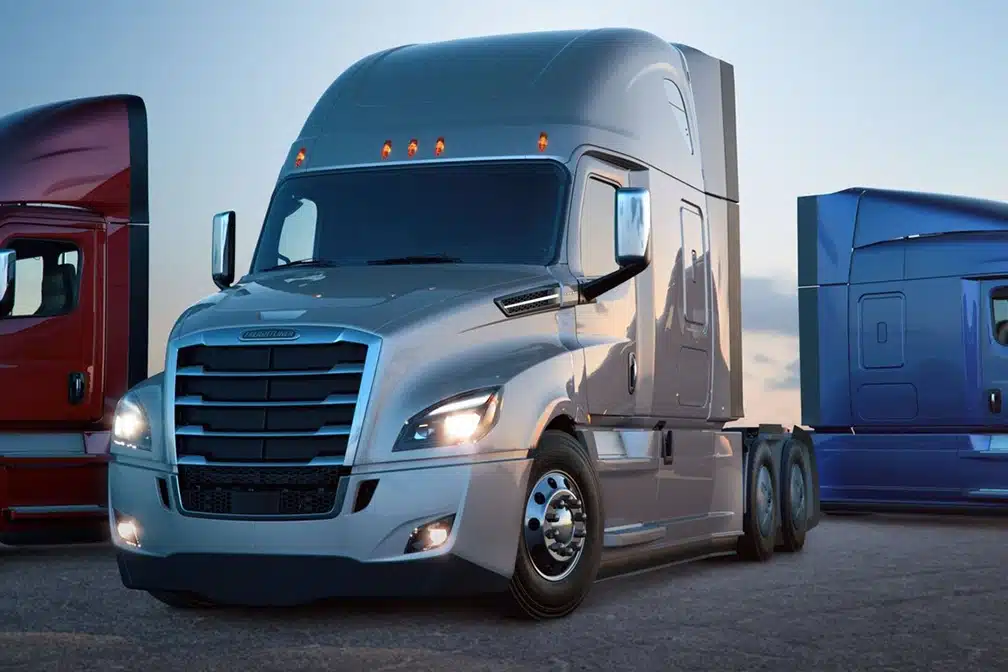July 27, 2024 12:57 am
BRINGING THE AMERICAN TRUCK DRIVER THE LATEST TRUCK DRIVER NEWS
Freightliner: A Two-Decade Journey of Innovation and Leadership in the Trucking Industry
For the past 20 years, Freightliner has been a key player in the global trucking industry. It is a division of DTNA, and is shaping the industry’s future.

For the past 20 years, Freightliner has been a key player in the global trucking industry. Known for pushing the boundaries of innovation and sustainability, Freightliner, a division of Daimler Trucks North America (DTNA), has remained a market leader while shaping the industry’s future. This article explores Freightliner’s remarkable journey from the early 2000s to today, highlighting its milestones, innovations, and contributions to commercial vehicles.
Early 2000s: A Period of Change
The 2000s were a significant turning point for Freightliner. In 2001, DaimlerChrysler (now Daimler AG) acquired Freightliner, marking the start of a new era. This acquisition allowed the company to leverage Daimler’s vast resources and automotive technology expertise, giving it a competitive edge in the trucking market.
A standout development of this period was the introduction of the Freightliner Cascadia in 2007. This revolutionary truck featured aerodynamic enhancements, fuel-efficient engines, and advanced safety features. The Cascadia quickly became popular among trucking companies for its cost-effectiveness and environmental benefits.
Mid-2000s to 2010s: Trucking Advancements and Sustainability
As environmental concerns grew, Freightliner evolved its product line to meet stricter emissions standards and reduce its carbon footprint. In 2010, the company unveiled the Cascadia Evolution, which featured further aerodynamic improvements, making it one of the most fuel-efficient trucks on the road.
Freightliner also ventured into alternative powertrains, introducing the M2 106 Hybrid in 2009. This medium-duty hybrid truck offered a glimpse into the future of sustainable transportation, with improved fuel efficiency and reduced emissions.
2010s: Electric and Autonomous Initiatives
The 2010s saw a shift towards electric and autonomous technologies in the trucking industry, and Freightliner embraced these trends. In 2018, the company unveiled the eM2, an all-electric medium-duty truck designed for urban delivery applications. With zero emissions and reduced noise pollution, the eM2 represented a game-changer for last-mile logistics.
Freightliner also made significant strides in autonomous driving technology, partnering with Torc Robotics in 2019 to develop autonomous trucks. This collaboration aimed to combine Freightliner’s expertise in commercial vehicles with Torc’s autonomous software to create safe and efficient self-driving trucks. These developments paved the way for the future of freight transportation.
2020s: A Commitment to Sustainable Trucking
As we entered the 2020s, Freightliner continued to prioritize sustainability and innovation. The launch of the eCascadia in 2021 represented a major milestone. This all-electric Class 8 truck, designed for long-haul applications, showcased the company’s dedication to reducing greenhouse gas emissions and promoting cleaner transportation solutions.
Freightliner’s commitment to sustainability extended beyond its product offerings. The company invested in infrastructure development, such as charging networks and battery manufacturing facilities, to support the widespread adoption of electric trucks.
A Legacy of Innovation
Over the last two decades, Freightliner has demonstrated its ability to adapt to changing industry dynamics and evolving customer needs. From the early 2000s, when it became part of the Daimler family, to today, Freightliner has consistently pushed the envelope regarding technology, sustainability, and safety.
As the trucking industry continues to evolve, Freightliner remains at the forefront of innovation, driving the development of electric and autonomous technologies that promise a cleaner, safer, and more efficient future for freight transportation. With its rich history and a commitment to excellence, Freightliner is poised to play a pivotal role in shaping the next two decades of the trucking industry.
Recent Posts
Copyright 2024. All Rights Reserved.
